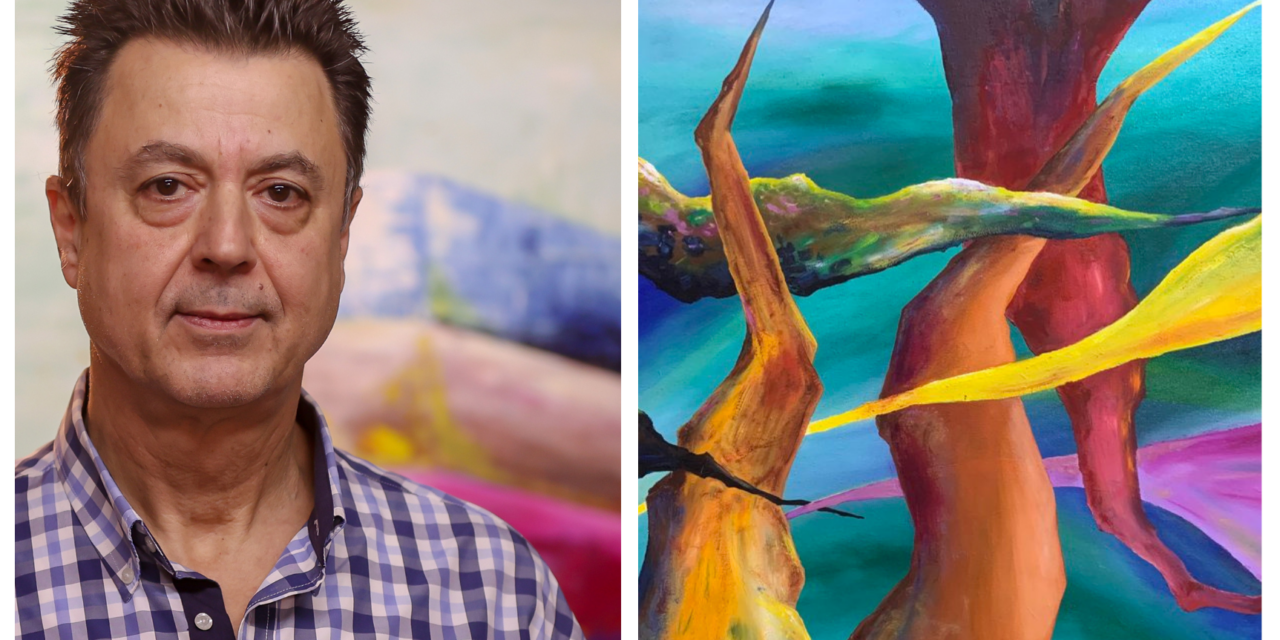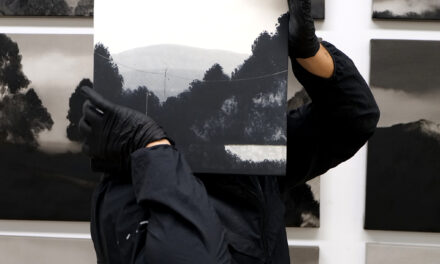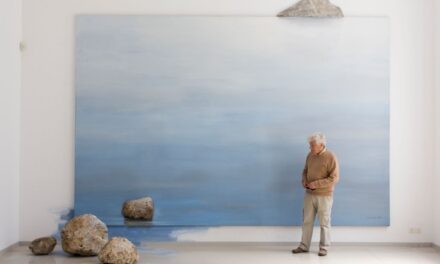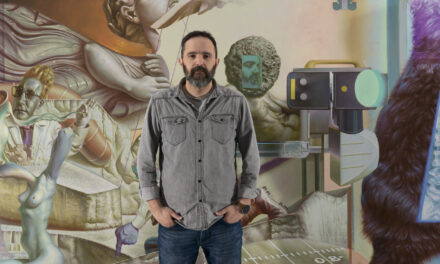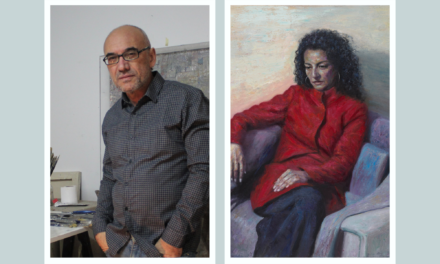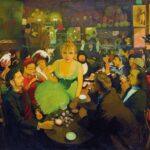Exploring the boundaries of dimension, movement and light, visual artist Manolis Stratakis redefines painting. His alternative approach, “Active Painting”, consists of works of art that progressively change right in front of the viewer’s eyes. Parts of the painting pop-up while others disappear, creating a plethora of emotions. Inspired by abstraction, optical art and conceptualism, Stratakis brings together a unique fusion of media aiming at enhancing the viewer’s perceptual experience.
The crucial element in Stratakis’ art is the innovative use of a projector as a powerful tool essentially proving that visual reality is an ever-changing, highly individualized experience. In any given moment, his vibrant compositions not only take different forms but also convey a different inner state for the viewer, highlighting the dynamic nature and hidden complexities in life and art. Reflecting his inquisitive approach, active painting encourages the viewer to fully embrace the present without getting entangled while indulging in the dynamic energy of change.
Manolis Stratakis has an academic background in Computer Systems Design and Computer Networks. After pursuing a career in Research and Innovation Management, his strong inner need to understand the world led him to experiment with art. He is fascinated by the human mind, space, macrocosm, microcosm, innovation and artificial intelligence.
Ahead of his exhibition at the Foundation for Research and Technology – Hellas, Manolis Stratakis speaks to Greek News Agenda* about the transformative power of art and the immersive experience of active painting.
You have a background in research and technology. What prompted you to get involved with art?
I studied Computer Systems Design and Computer Networks. I was fortunate enough to work with the Foundation for Research and Technology – Hellas, which today is the largest Research Center in Greece and among the most important in Europe. Working for FORTH was an excellent opportunity for me to delve into research, innovation, Internet applications and emerging technologies.
The applications we designed and developed very often had a social dimension. In fact, we used modern technologies to provide smart solutions to existing social needs. We moved beyond technology and this brought me a little closer to the people.
At the same time, I used to travel a lot, so I had the opportunity to visit Europe’s most important museums and to admire the masterpieces of the great painters. So I began to ask myself: What is art? How does art change with time, political conditions, educational level or technology? Who decides whether a work of art is good, bad or average, and how? How does art influence society? How is the mind of a person observing a painting affected?
These questions were enough to “get me to work”. First as an amateur, slowly becoming more and more serious about it. At some point, I could no longer imagine myself not being involved in art.
Do you think that art and technology complement each other in some way?
Absolutely. Research is a prerequisite in both art and technology. Art involves research. And technology helps art to evolve. It provides artists with new tools and means. It fosters new forms of art such as digital painting, virtual reality and installations that combine physical and digital elements.
Technology has a lot to offer today to an aspiring artist. Some people have the opportunity to study art. For those, however, who do not have this opportunity modern technology provides excellent alternatives.
What is “Active Painting” in terms of the process of its creation and the result produced?
Active Painting consists of two parts: a physical painting and a projector that illuminates the painting. My goal has never been to make beautiful art. This has been done (and is being done) by other, much more talented painters. My real motivation was to come up with something new, something that never existed before. In art almost everything has already been done. As a result, it’s harder to discover something new in art than in technology.
I also realized that, regardless of style, painting is static, in the sense that every painting is what it is. It doesn’t change. So, I wondered, what if I created a painting made of colors that could change?
This question had been on my mind for some time. I came up with a few ways in which this could be done. The “easiest” one was through the light of a special projector that would create visual color mixing. I did some initial market research to identify projectors and check their capabilities. I ordered them and started experimenting. The initial result were quite far from what I had imagined. It was interesting but at the same time very confusing. I didn’t feel it had any value. It took me 2-3 years to create something I was satisfied with. The biggest difficulty I had to face was that, at the same time, I had to tame not only the color but also the light. And the whole effect had to be meaningful.
In the process of producing an active painting, apart from the initial subject matter, which itself is a challenge, you need to make a proper choice of colors. As the colors are constantly changing, we have to get something beautiful at every stage of the project.
Some elements of the painting disappear completely, then after a while they appear while some others disappear at the same time. There is an impressive visual intensity and an immersive sense of movement, depth or three-dimensionality.
What are your artistic influences?
Most of them have their origins in abstract expressionism with elements of surrealism and conceptualism. I have been influenced by painters such as Pollock, Rothko, Magritte, Dali, Miro and Kandinsky.
Several of my works also have overt naïve elements. I don’t know if this is something that will change along the way, or something I will never be able to let go.
*Interview by Dora Trogadi
TAGS: ARTS

